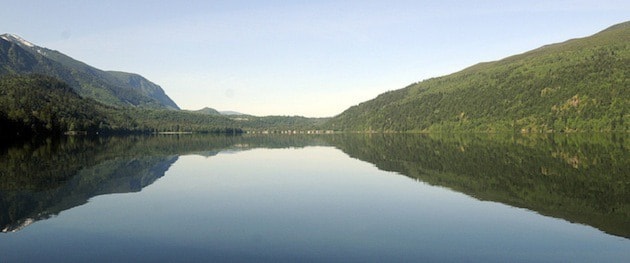New research is showing that water quality at Cultus Lake is suffering from the effects of nutrient loading, known as "eutrophication."
The excessive nutrients are from sources like agricultural fertilizers and soil erosion, which can cut oxygen levels in the popular lake and threaten fish habitat.
The upshot is more algae, more weeds like Eurasian water milfoil, and less water clarity.
The nutrients find their way into the lake water from the rain, snow and dust, as well as from bird droppings and septic leaching.
Dr. Daniel Selbie, a limnologist, will be speaking on the topic, Jan. 22 at Cultus community school.
He'll be discussing the latest research by SFU master's student Annika Putt which points to culprits such as increased human activity around the lake, and a population of resident gulls.
“We have strong evidence that Cultus Lake water quality has changed significantly over the past several decades, and with Annika Putt’s masters research, for the first time, we know the main factors driving this change.” he said.
The extra delivery of nutrients has kicked off something called "cultural eutrophication," characterized by elevated growth of algae and potentially other aquatic plants, such as invasive Eurasian water milfoil.
Part of it, they've found is coming from nitrogen and phosphorus.
"An unexpected finding" was that some of the nutrients are from airborne fertilizers as well as vehicle and industrial emissions in the Fraser Valley airshed.
Other important sources are septic system leaching, and droppings from certain gulls.
"Since high levels of nutrients from atmospheric sources have been found in the Cultus watershed and in other parts of the Lower Mainland, it is possible that urban and agricultural emissions that are transported in precipitation and dust are impacting aquatic ecosystems throughout the region," said Selbie. "The study highlights that sound integrated watershed and airshed management is critical for the sustainable use and enjoyment of Cultus Lake in the future."
Selbie is an Adjunct Professor at Simon Fraser University’s School of Resource and Environmental Management, and Head of the Lakes Research Program for Fisheries and Oceans Canada’s Science Branch. Selbie co-supervised the master's level research study.
There's strong interest in water quality issues around the lake.
"If left unchecked, excess algal growth depletes oxygen for fish in the deep water of the lake, reduces water clarity, creates taste and odour problems, threatens fish habitat, and makes a lake less attractive for swimming, fishing, boating and other recreation.”
Eutrophication can devastate food webs for Cultus Lake's rare and endangered native fish, like the Cultus sockeye salmon, and the Cultus pygmy sculpin.
Dr. Daniel Selbie will make a presentation on the research on Jan. 22 from 7 p.m. to 9 p.m. at the Cultus Lake Community School. This is a free event hosted by participants in the Cultus Lake Aquatic Stewardship Strategy. Everyone is welcome.
“Spatiotemporal nutrient loading to Cultus Lake: Context for Eutrophication and Implications for Integrated Watershed-Lake Management” is a 2014 Master of Resource Management research study by Annika Elsie Putt, available on the Simon Fraser University website: http://theses.lib.sfu.ca/thesis/etd8600.
jfeinberg@theprogress.com
twitter.com/chwkjourno
